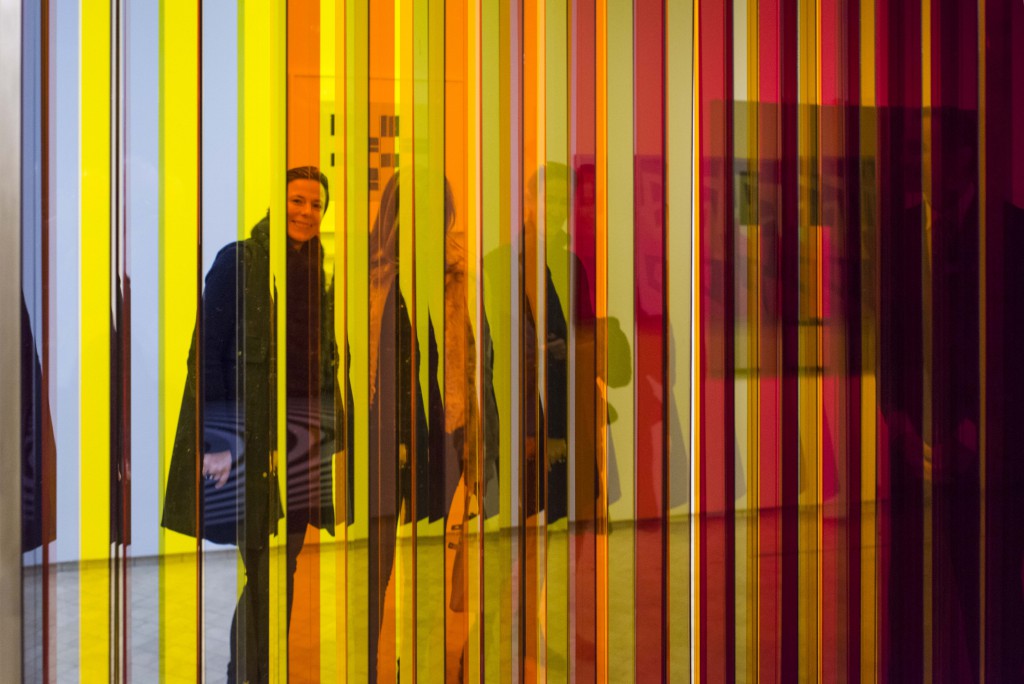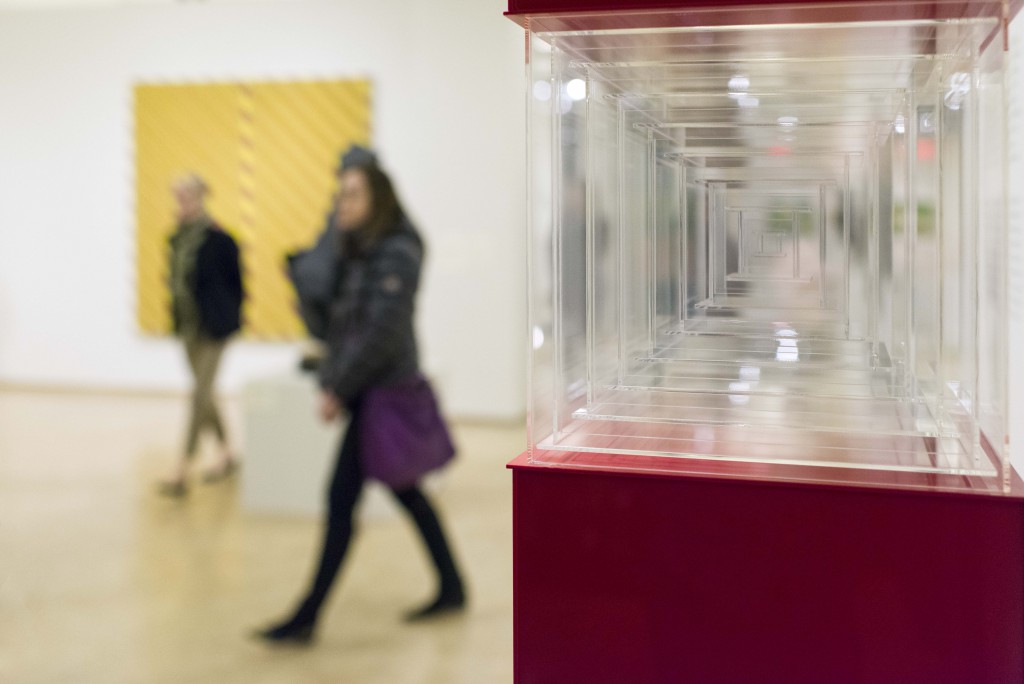
Installation photograph, The Illusive Eye. Photo by Martin Seck. Courtesy of El Museo del Barrio.
I recently organized the exhibition The Illusive Eye at El Museo del Barrio. The artwork in the show is primarily kinetic and Op art—work that paradoxically creates an unsettling visual response in us, even as it pleases us aesthetically.
In this issue of ART21 we’re considering different kinds of illusions in and around artwork and its presentation. We’re highlighting personal essays by artists on the development of their work and its relation to illusion, sometimes visual, other times conceptual, and often a little of both. We’re also featuring an institutional critique of the curatorial practice, as well as in-depth interviews and reviews of solo exhibitions. Other forthcoming articles investigate mediated experiences as social illusions we’ve come to rely on. As we’ll learn together over the course of the next two months, illusions in the art world are hardly containable in the works themselves.
The Illusive Eye was organized to revisit and rethink a 1965 show at the MoMA called The Responsive Eye. The show was hugely popular in introducing Op art into American popular culture at the time. Our take on the show sees a parallel between the illusions suggested in the artwork and the illusions manifested in the organization of the show itself—that is, in curatorial practice. Specifically, we’re interested in how the practice of curation is naturalized to exclude certain artists from participating—in this case, artists from Latin America. We are, after all, a Latin American museum of art. Yet we don’t want to simply fill in the gaps of art history. We want to question the museum and art historical practices that engender lasting illusions in history and in the visibility of Latino artists. Our critique applies to such exclusions in a general sense.

Installation photo, The Illusive Eye. Photo by Martin Seck. Courtesy of El Museo del Barrio.
We suffer illusions all the time. “Suffer” in the sense that we permit them to shape our lives unwittingly. Also, they can harm us—the other sense of suffering illusions. Naturalness is in itself a form of illusion—believing things to be so, simply because we see them that way. Or because they are presented to us as such. That’s what museums do: present the so-ness of museum-worthy art. Art history also does this by its very nature. The world according to art history is anything but natural, yet history presents itself as a collection of truths about the past. This becomes both a conceptual and institutional illusion when it comes to organizing exhibitions in museums.
Our visitors have responded well to this somewhat out-of-the-ordinary approach to organizing a museum show. They’re not used to seeing institutional critiques come out of institutions. Our exhibition has been so popular that we’ve had to open our doors on Sundays to keep up with demand. So we see ourselves channeling something of the popular success of the original MoMA show. Illusions still fascinate us. And artwork is still a locus of illusion that we can harness to think about things, especially our perceptions of the world we inhabit.



